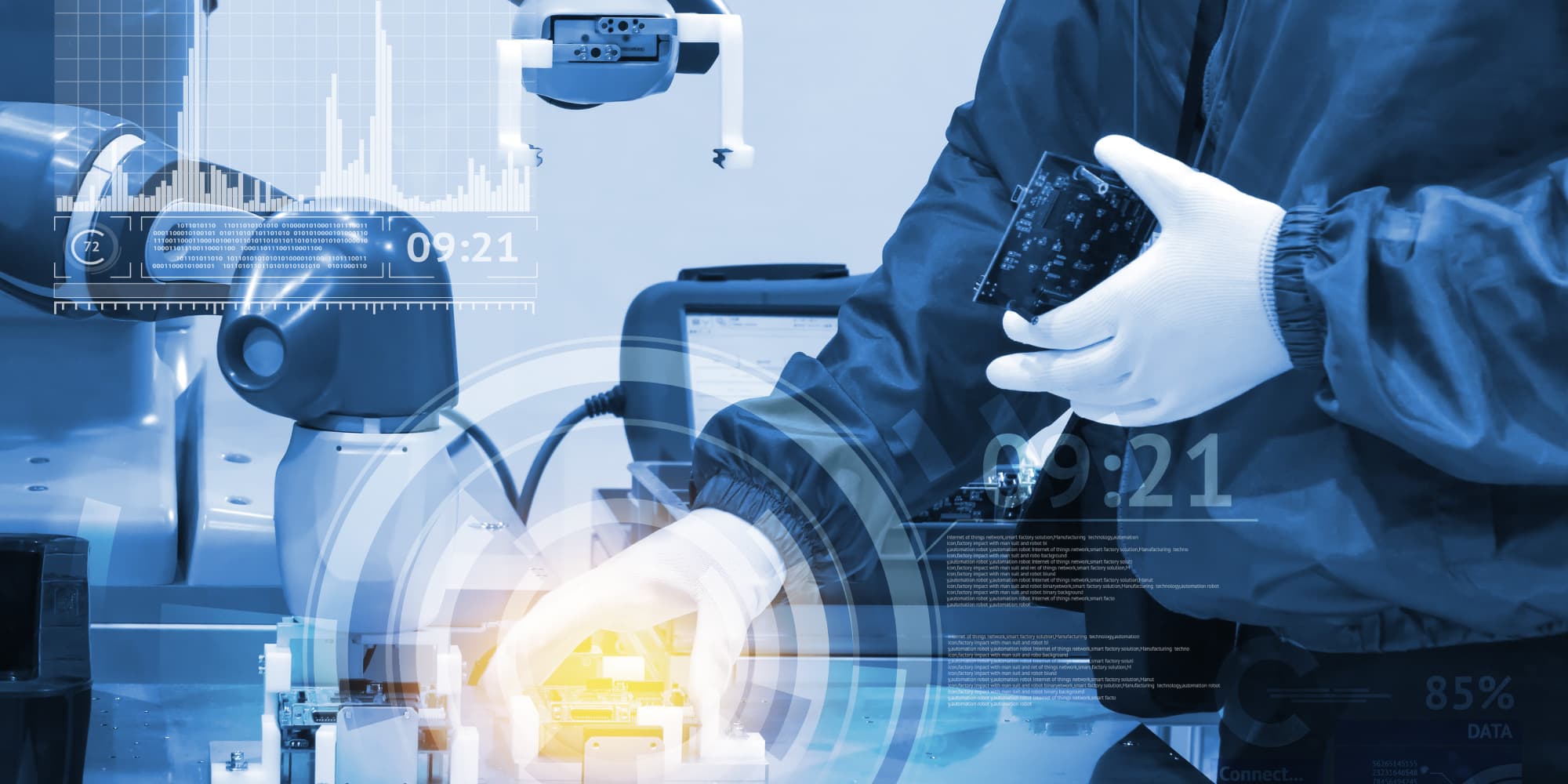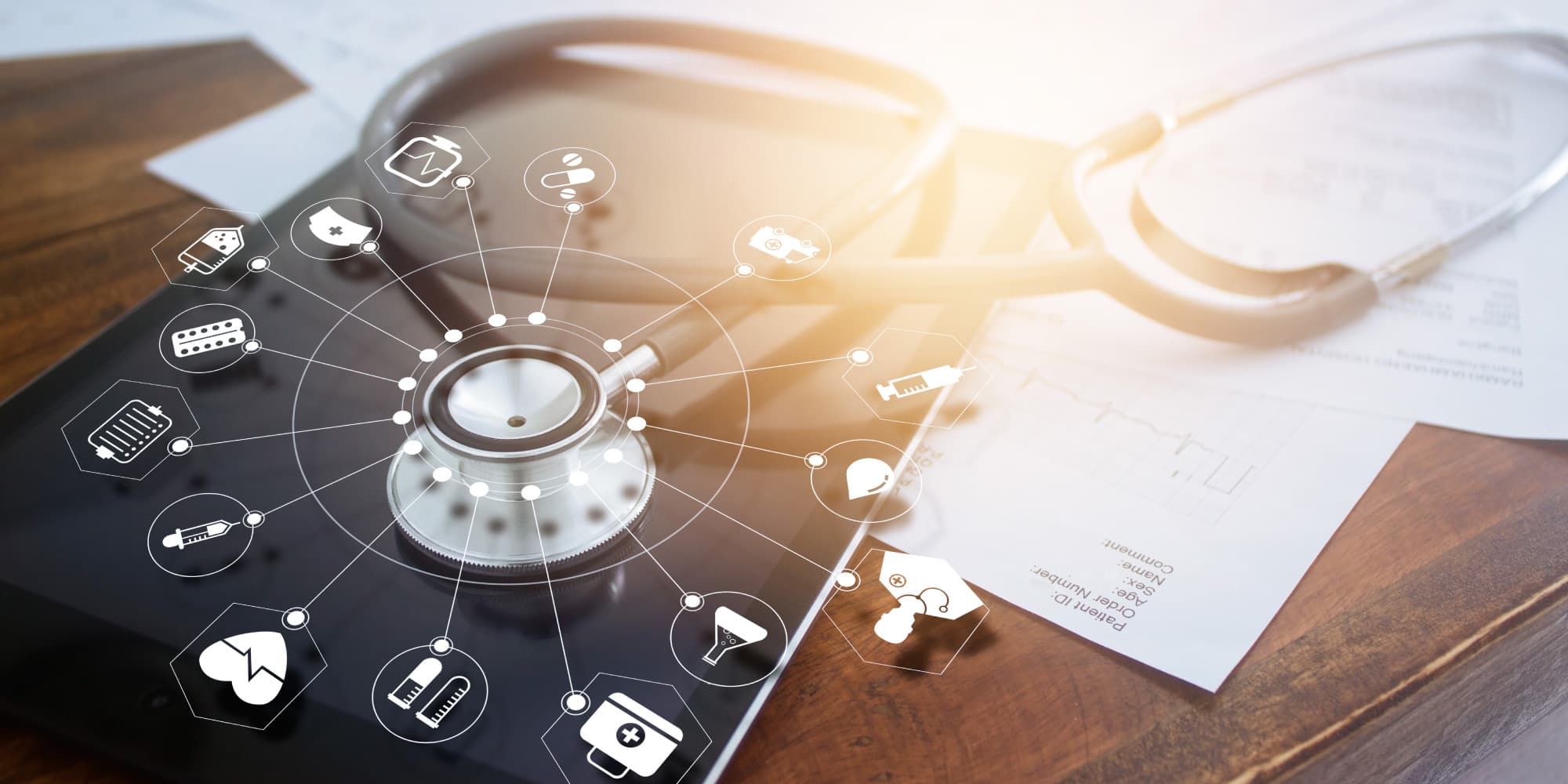How can we live a healthy life for longer? And what are we going to do to tackle the ever-increasing cost of healthcare? By gathering more data about our health, making predictions about how our health will evolve and by working with our doctor to make the right choices for a healthy life. Perhaps we’ll even be paying a ‘personalized’ premium for our health insurance – just as we do now for our car insurance. Although technology and artificial intelligence will definitely play a major role in this story, legislation and other regulations will have to ensure that this is a positive story, emphasizes Peter Peumans, senior vice president life science technologies at imec.
Your medical records: lots of data – and they belong to you
In the future, technology will let us live a longer, healthier life. Good for us of course, but also a must for our economy.
In developed countries, medical costs are becoming untenable. Or, as Warren Buffet puts it so expressively: the cost of healthcare is like a tapeworm for the economy. To give you an idea, in 2016 the US spent 17.2% of its gross domestic product (GDP) on healthcare. Switzerland is ranked second, with over 12% of its GDP.
The cost of healthcare as a % of gross domestic product for OECD countries. Data for 2016. © OECD
How are we going to be able to live healthier for a longer time? One way will be by monitoring our health better so that diseases can be detected at an earlier stage. This trend has already been set in motion with pedometers, heart rate monitors and continuous glucose monitors that are only minimally invasive. In the future, the number of parameters that we can monitor on a continuous basis will expand further (blood pressure, stress, etc.). We will also be using sensors in various shapes and sizes, integrated into bracelets, clothes, contact lenses, plasters and even implants.

In the future we will wear a wide range of sensors that monitor our health: integrated into bracelets, clothes, contact lenses, plasters and even implants. Here we see an intelligent insole developed by a.o. CMST, an imec lab at UGent, and the Belgian company, RSscan. 900 sensors measure the distribution of pressure while you walk or run. This is important for preventing sports injuries and to avoid amputations in patients with diabetes.
Of course it will be important to have these tools approved by official bodies such as the FDA, the Food and Drug Administration. For example, in June 2018, the FDA approved the first implantable glucose sensor and the accompanying app, designed to continuously monitor diabetes patients. This is a good example to show how technology can help us monitor other diseases as well.
But in fact, we might noteven have to buy special tools to take these readings. We will also be able to use our smartphone – widely available and affordable, even in developing countries – to provide us with a whole range of measurements. For instance, our smartphone camera can be used to take regular readings of our heart rate to detect irregular heart rhythms, including atrial fibrillation, (e.g. FibriCheck). But even the way we use our smartphone in daily life can reveal something about our health. For instance, how quickly we swipe, how dexterous we are with the keypad, how often we search for something and how all this changes over time can tell us something about our mental state. It is not unimaginable that in the future we will be able to use this data to detect dementia or depression more quickly, a bit similar to how the Palo Alto-based Mindstrong app now detects depression. But first we do have to ask ourselves whether we really want to detect diseases for which there is no cure (yet), e.g. dementia. Clearly, this is something we should discuss with our doctor in advance and such ‘sensitive’ information should of course be sent to our doctor first.

We will be able to take readings of lots of medical data using our smartphone. One example is the app from the Belgian company, FibriCheck. This app for the detection of irregular heart rhythms, including atrial fibrillation, using the camera on a smartphone, was approved by the FDA in 2018. (copyright FibriCheck)
It will also become much easier to take and analyze blood samples without always having to involve a doctor, nurse or lab. Analyzing blood samples is becoming much cheaper and simpler now thanks to small lab-on-chip systems that can even connect with your smartphone to view the results.
This way, patients can check for themselves when they are ready for their next cancer treatment and doctors can easily test whether an infectious disease such as hepatitis C is being treated properly.
For the first example, cancer patients currently have to go to the hospital to check whether the level of their white blood cells is high enough for their next round of chemotherapy treatment to begin. Yet hospitals can be a dangerous environment when it comes to germs, certainly for a cancer patient with low immunity. So if they could do the same test at home, this would be much easier and safer.
All of this data will be collected in your medical records, along with more ‘traditional’ medical data, including your genetic mapping (the cost of sequencing will be so low that it will be affordable for everyone). But those records will be your property and you can look things up for yourself and view trends, although this will probably only be of interest to a small minority.
You are also the only person able to give a doctor, insurer or pharmaceutical company permission to look at your records, or part of them.
In the case of a pharmaceuticals company, this could even be in return for payment, because by using your data and the data of thousands of other patients with a specific disease, they may be able to develop a better treatment. In other words: your health (data) will become a capital asset that you control.
Doctors will become coaches and information specialists
Doctors will be given a different role, too, helping their patients to interpret the data correctly and make the right choices. Because although we may have access to all our data, this does not mean that we want to be on top of it the whole time. That’s something most of us leave to specialists. Just as you would with a portfolio of shares. You may be very interested in those shares and how they are doing, but you’d probably prefer to leave most of the work to the experts so that they can track everything in detail and take the right decisions. And, naturally, you’d be consulted, if necessary, and receive regular updates.
Because of the huge quantity of data involved, the details will be interpreted first and foremost by machines. Artificial intelligence and machine learning will enable us to recognize abnormal values and your data will be compared with other information so that better diagnoses and treatments can be offered. Computers will even be able to make predictions about your health based on your values and lifestyle details.
It’s similar to the CO2 emission scenarios that the IPCC calculates for us now, saying things like: ‘If we keep on going the way we are today, it will be x degrees warmer by 2050; and if we use nothing but green energy, it will only be y degrees warmer.’ Translated to our health, that might become: ‘If you keep smoking, you’ll live to be 70. But if you stop smoking now, you’ll make 90.’ Various hypothetical scenarios can be calculated in this way and discussed with your doctor so that, together, the right choices can be made.
The medical training for doctors will be transformed. Doctors will be assisted by artificial intelligence, which means it is important for them to understand the details of how the technology works. This will enable them to recognize incorrect interpretations made by the computer. Providing (psychological) guidance and coaching to patients will also become very important.
In addition to their doctor, people will also be able to opt for specialized apps that may help them. For example, apps to help you choose the sport that suits you best, etc. A whole new economy of health apps will be created, aimed primarily at extracting the maximum from all your data in the area that interests you most.
A personalized, transparent health insurance
This new approach to health – gathering all sorts of medical data and coming up with scenarios – will have many socioeconomic consequences.
For instance, the predictions about our health might be linked to the estimated medical costs and to the premium you pay for your health insurance.
It will be similar your car insurance today, where the premium depends on the way you drive (number of accidents, fines, etc.). You’ll be able to opt to pay less if you add sensors to your car/body so that you drive/live better. Or you can opt to keep smoking and pay more. Just as you can decide to take a luxury holiday: it may not be good for your bank account, but you can’t resist the offer. This is also where regulations and legislation will become very important in terms of excluding things that we have no influence over (such as genetic diseases). Just as today it’s forbidden to allocate certain benefits or disadvantages based on skin color, sexual orientation or religion.
So, by 2035, we will be more in control of our own health. The transparency, security and protection of our data, as well as laws and regulations will be extremely important to turn this vision into realityand and to keep the cost of healthcare more under control. We’ll also have to be on our guard (through some sort of official umbrella authority) to make sure that the innovations really do mean cost-savings for healthcare and don’t just add more complexity and fragmentation to the health system.
How is imec contributing to this future?
Imec is working in a number of different ways to enable this future health scenario. By collaborating with hospitals and medical companies to produce sensors capable of high-quality measurements and readings – and by developing the corresponding intelligence needed to interpret the data. In the iChange program, this is being combined with the search for the right approach for motivating people to adopt a healthier lifestyle. In 2018, imec published the results of the SWEET study, featuring the biggest dataset ever collected for detecting stress.
Imec is also exploring ways to integrate these sensors into lenses, clothes, car seats, etc. to make them more user-friendly. In 2018, imec demonstrated glasses that can detect eye movements. First and foremost, this is of interest for operating AR/VR systems, but it may also have possible uses for the early detection of neurodegenerative diseases.
In addition, imec is working with the biggest sequencing companies to make DNA sequencing cheaper and faster, both for diagnostic purposes (e.g. examining tumors in detail) and to make personal genetic maps affordable and available to everyone.
Lab-on-chip systems also play a prominent part in imec’s research, focusing on the miniaturization, integration and investigation of new technologies such as photonics or lens-free microscopes. In 2018, imec researcher, Niels Verellen, was awarded a prestigious ERC grant to develop ultra-small (fluorescence) microscopes that would be of great value for lab-on-chip systems.
Multi-electrode arrays (MEA) are chips on which cells can grow and for which electrodes can provide bidirectional communication with these cells. In the future, these types of chips will become important for developing new medicines and for checking what sort of medication will work best for a particular individual. This means personalized treatment will become possible. In 2018, imec succeeded in producing an MEA chip with more than 16,000 electrodes.
Imec is also closely involved in setting up new businesses in the health sector. These include miDiagnostics and Onera, or supporting FibriCheck via the imec.istart program.
Want to know more?
- You’ll find more information about imec’s research into wearables, lab-on-chips and neuroprobes, as well as data science and security, on the webpages indicated.
- Read more about the launch of the imec.iChange program in this magazine article.
- The article ‘Can we measure happiness?’ tells you more about sensors for psychiatrists.
- In this article, you can read about how imec aims to make sequencing cheaper and fast so that it can be used in the doctor’s office.
- How can chip technology make cell therapy - a promising cancer treatment - more accessible? Read about it in this article.
- A chip on which you can grow heart cells and which tells you which medication is most suitable for your body? Find out more about it in this article.
- Read about a smart shoe for diabetics and sportspeople here.
- Sensors that try to map our brain? This article about Neuropixel tells you more.
This article is part of a special edition of imec magazine. To celebrate imec's 35th anniversary, we try to envisage how technology will have transformed our society in 2035.

Peter Peumans graduated as a civil engineer in electrical engineering from KU Leuven and was awarded his doctorate at Princeton University. He then became professor in Electrical Engineering at Stanford University, where he led research into new systems for capturing solar energy. He has been working at imec since 2011 and is involved in the strategy for imec’s Life Sciences activities.
Published on:
4 January 2019














